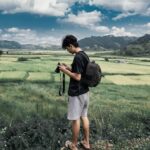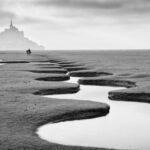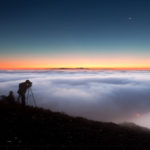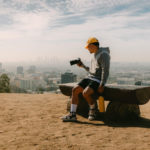Dennis Calvert has devised a surprisingly uncomplicated method to make a light painting self-portrait in which he appears to be on fire. Outside of some pretty standard photography gear (camera, tripod, and a speedlight) all you need to take one of these for yourself is an electric glow stick. To make things even easier, Calvert put together a short behind the scenes timelapse video, which you can watch here:
In case you couldn’t quite follow Calvert’s moves through the darkness of the film, here’s a breakdown of how he did it.
What You Need
- DSLR
- Speedlight
- Tripod
- Electric Glow Stick
Once you have those thing gathered up, you’ll need to find a dark location to take your photograph. For reference, Calvert took his picture at night out in the country, where light pollution is minimal.
Once you’re on location, set up your tripod and set your camera to ISO 400 at about f/8. You’ll be using a long shutter speed, but it will vary depending on your specific location. Luckily, you won’t have to worry about the electric glowstick burning out, so you can do a few brackets to find a good exposure time. Mark the spot where you’ll be standing and use a flashlight to focus your camera to that spot.
Next, sync your speedlight to your camera so that it fires at max intensity, and set it behind you (Calvert strapped his to his back) so that it overexposes the background that is directly behind you but leaves a dark vignette around the frame. It helps to have a wall behind you to catch all the light. Fire your shutter, as soon as the flash goes off, turn on the glow stick and shake it around, outlining the shape of your silhouette. Turn off the glow stick and check to see how your light painting came out. If it’s a little dark, try lengthening your shutter speed; if it’s too bright, try working a little quicker.

How to Create Fire with Light Painting
It’s worth mentioning that the final version of Calvert’s photo was in no way edited. The image above is straight out of his camera. Very impressive.
Like This Article?
Don't Miss The Next One!
Join over 100,000 photographers of all experience levels who receive our free photography tips and articles to stay current:






Leave a Reply